How to pinch watermelons correctly, scheme for open ground and greenhouses, planting and care
Melons grow best in southern countries, which are constantly exposed to high temperatures. However, breeders have developed many varieties that adapt perfectly to almost any climate. Thereby growing watermelons gardeners from different countries can do it. To get a high-quality harvest, you need to familiarize yourself with how to pinch watermelons correctly.
Why do I need to pinch watermelons
Many gardeners are interested in whether a pinch is needed when growing melons. It is no secret that watermelon bushes can be grown in different climatic conditions, so the agricultural technology of such a plant has its own characteristics. For example, if you grow it in southern regions or in warm countries, then pinching is not charming. In such conditions, the fruits ripen much better and faster. Therefore, even without removing unnecessary shoots, the yield will not deteriorate.
Experienced gardeners are advised to take more care of the bushes and pinch them when grown in the northern regions. The climate in such regions contributes to the endless formation of shoots and fruits that do not have time to ripen due to a lack of heat and nutritional components.
Even a warm summer will not help speed up the ripening of a large number of watermelon fruits in the northern regions. Therefore, it is necessary to regularly engage in plant pinching and remove excess shoots. Shortening the lashes contributes to the accumulation of nutrients in the plant, which will be used during the ripening of watermelons. If you do not prune the shoots in a timely manner, many watermelons will be imposed on the bushes, which will not have time to grow and ripen.
When pinching a watermelon
To carry out the procedure correctly, it is necessary to determine the exact time when it is better to pinch the seedlings. Gardeners do not advise doing this too late or early, so as not to damage the bushes and worsen the development and maturation of the crop.
Some people choose to prune the extra stems right after the seedlings start shading each other.
Most often, the bushes grow during flowering and the formation of the first fruits. In this case, shoots are removed, on which watermelons have not begun to form. This will help prevent congestion of the seedlings, which would interfere with the normal development of the bushes.
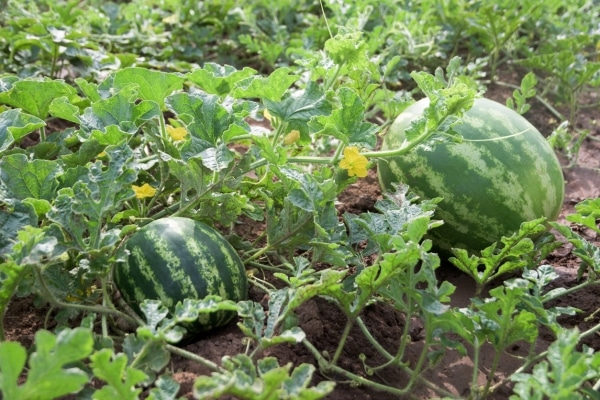
When pruning, you should not remove too many leaves or shoots, since the plant needs photosynthesis, which is impossible without green leaves.Therefore, you should always leave at least 2-4 leaves on each seedling. If the bush is already large and has mature berries on it, you will have to leave more leaves.
Sometimes gardeners are engaged in pinching 2-3 weeks after planting is complete. During this time, several real leaves have time to appear on the seedlings. In this case, all leaves of the plant are removed and only the central shoot is left. Such an early pinching speeds up the growth of watermelon seedlings several times and contributes to the further development of berries.
Basic rules for the pinching procedure
Some inexperienced gardeners argue that shortening the stems negatively affects the growth and maturation of the crop. However, such problems can occur if the correct plant pinching pattern has not been used. Therefore, you need to familiarize yourself with the basic recommendations for the procedure in advance.
When pruning shoots, it is important to remember that the berries should only be imposed on the main stem.
Therefore, additional shoots are removed without fail, as they interfere with the normal development of the crop. When pinching watermelon seedlings, you need to monitor the distance between the fruits and the remaining leaves. They should be 20-25 centimeters apart from each other. This distance is enough so that the fruits are not shaded and ripen quickly.
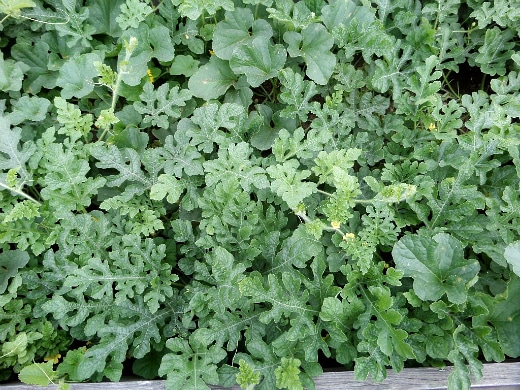
There are several recommendations that must be followed when shortening shoots:
- One main stem is left on the bush, on which there should be no more than 7-8 large leaves.
- It is recommended to practice shortening the stems only after flowering, when the diameter of the imposed fruits will be 7-10 millimeters.
- After the first pinching, special supports for the garter are placed between the watermelons so that the bushes do not break.
- When the ripening process of the berries is completed, pinching is contraindicated, as this can worsen the storage time of the harvested fruits and their taste.
Observing the listed rules for pruning watermelon seedlings, you can collect a tasty and large harvest.
Forming a watermelon in a greenhouse
When growing watermelons in a greenhouse or on the street, they are necessarily engaged in the formation of seedlings. It is recommended that you familiarize yourself with the specifics of this procedure in order to perform it correctly.
One stem
This method is considered the most versatile, as it is used when growing conventional and hybrid varieties. To form a bush into one stem, you need to tie the central whip to the support and remove all unnecessary shoots. When fruits begin to form on the bush, only 4-5 berries are left, and the rest are removed.

Vertically, fruiting on second-order shoots
This method is more complicated, since you have to regularly monitor the growth and flowering of the stepsons. When forming bushes, the main lashes are tied to the supports with a strong rope. Then the lower stepchildren are pinched and the shoots on which there are no "female" flowers are removed. The remaining stems are pinched so that they have 2-3 leaves.
In the open field
In open field conditions, it is not necessary to tie up the bushes, so they are grown in spread. With this method of growing, it is difficult to constantly monitor the flowers, since they are intertwined. Therefore, gardeners are advised to pinch the main stem at the initial stage of growth, so that the bush does not grow much.

After the ovaries grow
This method is used when you want the watermelon bushes to grow freely. The pinching of the shoots is carried out only in the upper part, so that they are within the melons. Bushes are formed after the appearance of 2-3 berries with a diameter of 5-7 centimeters. Shoots without ovaries are removed.In this case, the remains of plants are left on the ground and not pulled out, so as not to accidentally harm the lashes.
With fruiting on shoots of the third order
This method is used if watermelon bushes are grown in the northern regions. Shoot pruning is done after the fifth leaf appears on the shoots. When the second-order stems appear on the seedlings, they are cut off above the fifth leaf. Then shoots of the third order will begin to grow, on which berries will be imposed. 3-4 fruits are left on each bush, and the rest are removed.

Caring for plants after pinching
Bushes after pinching need special care, which will help improve yields. When growing watermelons, the fruits are periodically examined and made sure that they do not come into contact with the soil surface. So that they do not touch the ground, you can cover the soil with a small layer of straw, which will protect the berries from rotting.Like other plants, watermelons need regular soil feeding. To do this, add liquid mullein, droppings and other organic fertilizers to the ground.
Also, to increase yields and improve the ripening of berries, superphosphate with potassium is added to the ground.
Do not forget about the watering that watermelon seedlings need. Watering is carried out at least twice a week in dry weather. This will prevent the soil from drying out quickly.
Conclusion
Some gardeners who grow watermelons are facing poor plant yields. To get more tasty and juicy fruits, you need to familiarize yourself with the features of pinching bushes and regularly remove excess shoots.
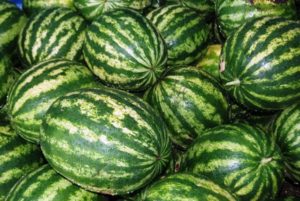
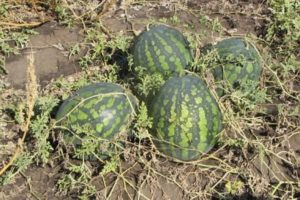
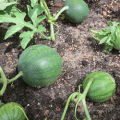
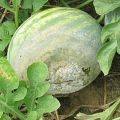
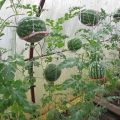
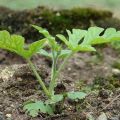
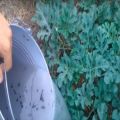

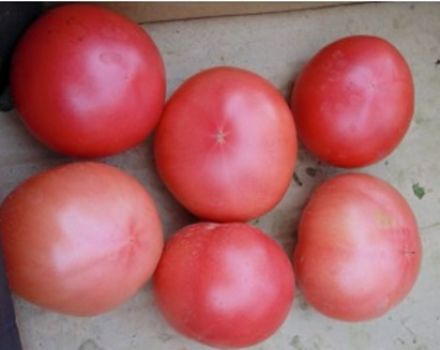
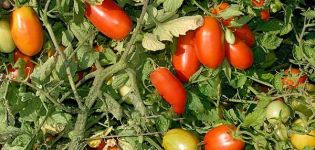
Very helpful article. Everything is very sensible - and how, and when, and why to pinch!